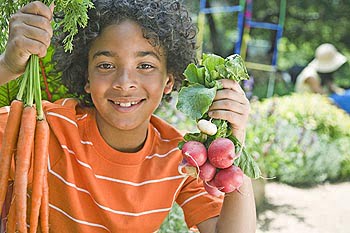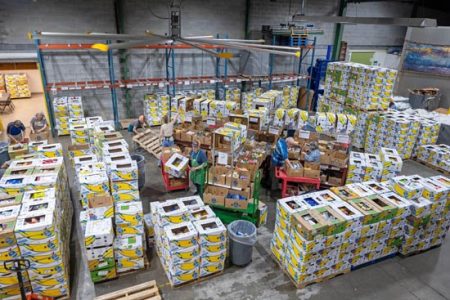Farm to School Program Supports Student Health & Farm Profits

by Kevin Concannon
In early November the U.S. Department of Agriculture (USDA) released its first Farm to School Census, with promising results. In the 2012-13 school year, schools served locally sourced foods to more than 21 million students and re-invested over $350 million into local economies.
Farm-to-school programs are thriving in both rural and urban districts in every state; 43% of public school districts reporting having a program in place, and an additional 13% are committed to launching one in the near future. In North Carolina, 81% of all school districts reported participating in or planning to participate in farm-to-school activities.
The Census results offer a national snapshot of how schools are connecting with local farmers, ranchers, and small businesses, by bringing healthy foods into the cafeteria, holding taste tests, helping plant school gardens, and hosting field trips to local farms—activities supported by research, training, technical assistance, and grants to schools and states.

Beyond that, farm-to-school programs support the work of parents, teachers, school nutrition professionals, and local communities in rearing the next generation of Americans to be healthier—and less obese. Research shows that children in schools with such programs eat more fruits and vegetables and are more willing to try and eat healthier foods now served in school breakfasts, lunches, and snacks.
There is also a positive economic benefit to local farmers and ranchers. Studies have shown that the economic multiplier effect of buying from local businesses can be between two and three times higher than from non-local providers.
Even the 56% of school districts that already have farm-to-school programs plan to spend more on local purchases in the coming school year. Fruits, vegetables, milk, baked goods, and herbs top the list of local products offered in schools across the country, but the USDA anticipates growth in beans and other legumes, grains and flour, meat and poultry, and eggs. In North Carolina, school districts spent an average of 19% of food budgets buying local, to the tune of $34.4 million.
Farm-to-school is part of the USDA’s “Know Your Farmer, Know Your Food” Initiative, which has helped increase the number of farmers markets to more than 8,100 nationwide. The initiative has also invested in cold-storage facilities, processing plants, and food hubs that aggregate products from many farms and help smaller producers reach larger buyers.
For more information about the Farm to School program, visit www.fns.usda.gov/farmtoschool/census; to learn more about broader efforts to support local and regional market opportunities, visit www.usda.gov/knowyourfarmer.
What’s needed now is for Congress to pass a long-term, comprehensive Farm Bill that continues building a strong agricultural economy and ensures healthy, affordable food for America’s children and families.
– Kevin Concannon is USDA’s Under Secretary for Food, Nutrition and Consumer Services.








